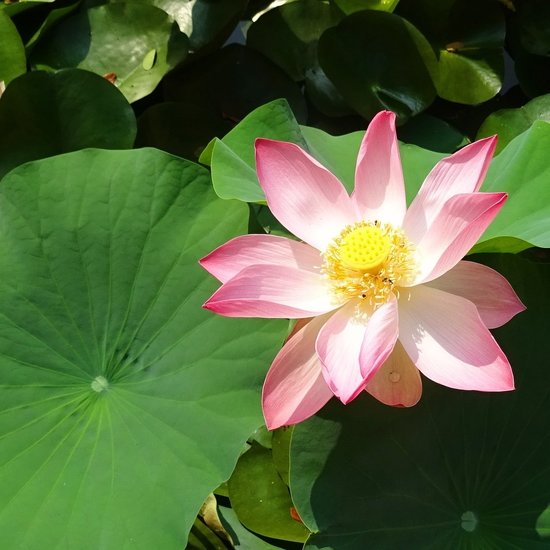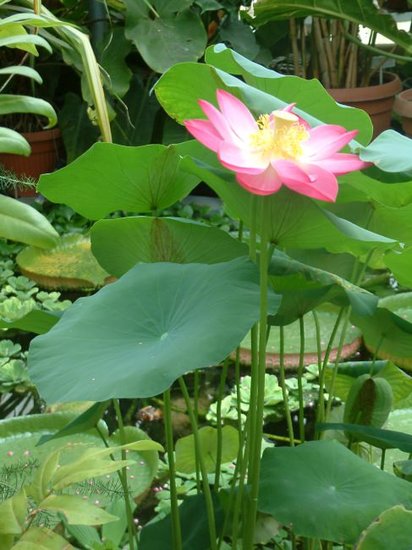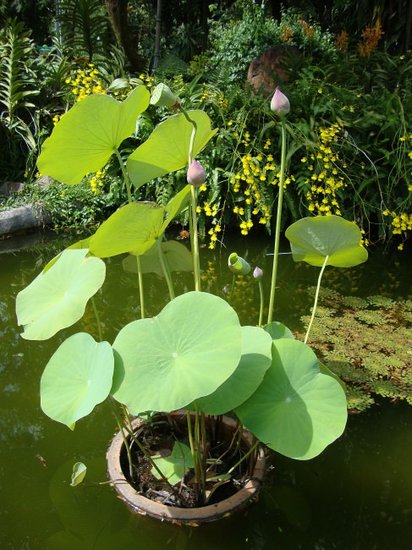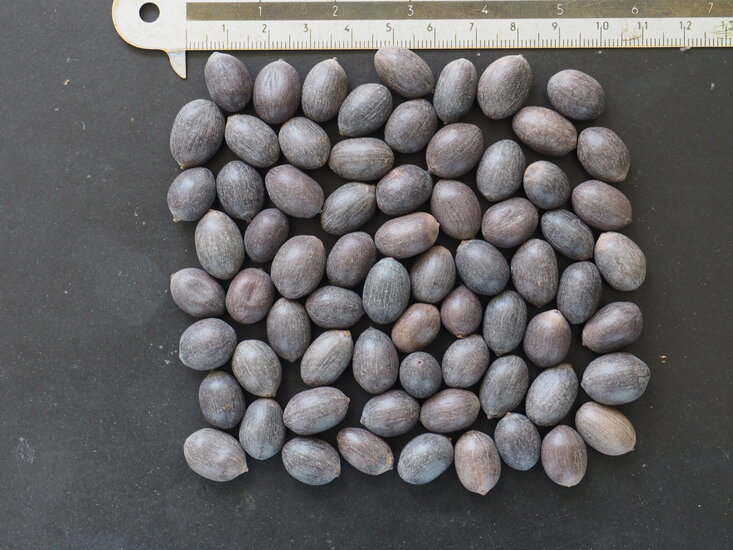Ask us your question








Product description
The Indian lotus is a magnificent water lily with shiny, 60 cm big leaves and pinky white flowers The plant is able to ‘warm up’ the flowers, in order to make them more attractive for cold-blooded insects. Measurements proved that the temperature of the flower could be between 30 and 35 degC, while the ambient temperature was only 10 degrees Celcius. The plant is holy in Hinduism and Buddhism, and is the national flower of India and Vietnam. All parts of the plant are edible, and the plant is often used in the Asian cuisine. The Indian lotus can be kept in a pond or a big tub. As long as the water around the roots doesn’t freeze, the species is hardy. A sunny spot is recommended, and use special pondsoil to grow the plants in.Sowing description: The seeds can stay vigorous for a very long time. Even a 1300 years old seed from China could still germinate! Sand the seeds with sanding paper or a file, until the yellow/whitish inside of the seeds becomes visible. Put the seeds in a glass of water at 20 degC, where the seeds should germinate in about a week. Replace the water regularly. After germination, the seeds can be planted in the pond, or in a tub with pondsoil.
Product specification
Do you have a question about this product?
Ask us your question
Product specification
Write a review about this product.
Reviews
View all reviews from our customers below
Hoi allemaal. Na veel pogingen en een lange reis heb ik de verzorging van deze plant eindelijk onder de knie. Hier is mijn advies voor het kweken van lotussen in Nederland.
Ik ga hier niet in op het zaaien, de benoemde zaaibeschrijving op deze pagina werkt goed.
Deze plant is niet geschikt voor in de normale vijver. Daarvoor is het water van een Nederlandse vijver zelfs in de zomer veel te koud. Dan is het slechts overleven voor de lotus, maar niet groeien en sterk worden. We moeten daarom de hoeveelheid water drastisch reduceren, zodat de zon het water optimaal kan verwarmen.
In Japan heb ik gezien hoe het moet: Vul een grote kuip, bijvoorbeeld een speciekuip, voor 80% met redelijk arme (vijver)aarde. De lotus wil zich spreiden en knollen aanmaken, zet hem daarom niet in een vijvermand. Graaf je ontkiemde lotussen, die nu wat wortels en enkele blaadjes hebben, zeer oppervlakkig in. De wortels en de nieuwe loten zorgen er zelf wel voor dat de lotus stevig in zijn ondergrond komt te zitten.
Schud hierop een laag water van vijf tot tien centimeter. Vul dit aan als het verdampt. Als de zon in de zomer schijnt, wordt dat kleine laagje water de temperatuur van badwater. De lotus vindt het heerlijk. Hij houdt er niet van als hij van diep onder water zijn bladeren naar het opppervlak en daarboven moet laten groeien.
Als het koud wordt en de bladeren verslakkeren, zet je de kuip in een vorstvrije ruimte tot in het voorjaar.
In Japan wordt de lotus als voedsel gecultiveerd in grote ondiepe betonnen bassins. Een ander voorbeeld is de Shinobazu lotusvijver in Ueno park in Tokyo. Deze vijver is hectares groot, maar het water komt niet tot aan je knieën. De speciekuipmethode zoals beschreven, zie je in alle botanische tuinen van het land.
Bij mij staan mijn twee kuipen zomer en winter in een glazen kas die tot twee graden boven nul bijverwarmt wordt.
I bought a packet of both this variety and the white one. Germinated a seed of each, with heating, at about 30 C. Took a couple of days for seeds to germinate in these conditions. I have tried these before and heat is the most important factor by far. Once they got roots I put them in a 4 litter glass bowl with normal soil and a layer of sand on top. They are growing quite well and one of them has already produces a runner. I added root tablets to the soil from a pond and aquarium shop. Since it is almost December I grow them on a southern windowsill, above (but not on) the radiator. Change water once a week or add liquid carbon (leaves are more reddish). Seems like it is a success this time. No aerial leaves as of yet but they put out new leaves or roots constantly.
Planning on moving them to a bigger container come summer.
De zaden aan de ronde kant (niet met het puntje) aangeschuurd tot op het witte en ze zijn allemaal uitgekomen. Drijvende zaden zijn niet perse kansloos. Soms met vocht komt het alsnog goed.
Ik heb nog een andere methode toegepast. Heb het topje er gewoon met een snoeischaar afgeknipt. Binnen de week waren ze allemaal al ontkiemd. Helaas zijn er wel enkele stengels zonder blaadje... Hopelijk komen deze ook nog in orde.
in 2 zaden voorzichtig een gaatje geboord zoals vorig review. op woensdag in het water gelegd en nu zondag verschijnd er reeds het eerste dicht gevouwen blaadje. Ben benieuwd


